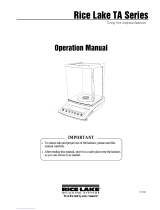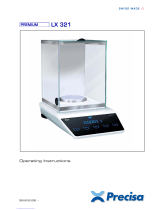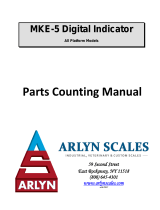
7.4 Working with the “Statistics” application ......................................................................................................................67
7.4.1 Statistical recording of series of weighings ..................................................................................................................67
7.4.2 Additive weighing to a target value ..............................................................................................................................69
7.4.3 Sample printout with statistical values .........................................................................................................................70
7.4.4 Formulas used for calculating statistical values ...........................................................................................................71
8 The “Formulation” application ........................................................................................................................ 72
8.1 Introduction to the “Formulation” application ..............................................................................................................72
8.2 Select the application ................................................................................................................................................72
8.3 Settings for the “Formulation” application ....................................................................................................................72
8.3.1 Overview....................................................................................................................................................................72
8.3.2 Special function keys for Formulation ..........................................................................................................................73
8.3.3 Special information fields for Formulation ....................................................................................................................74
8.3.4 Special printout information for Formulation ................................................................................................................74
8.3.5 Special identifiers for Formulation ...............................................................................................................................76
8.4 Working with the “Formulation” application .................................................................................................................76
8.4.1 Default settings ..........................................................................................................................................................76
8.4.2 Operating sequence ...................................................................................................................................................77
8.4.3 Sample printout for a Formulation ...............................................................................................................................78
9 The “Density” application .............................................................................................................................. 79
9.1 Introduction to the “Density” application. .....................................................................................................................79
9.2 Select the application ................................................................................................................................................79
9.3 Settings for the “Density” application ...........................................................................................................................79
9.3.1 Overview....................................................................................................................................................................79
9.3.2 Choosing the method of density determination ...........................................................................................................80
9.3.3 Selection of the auxiliary liquid ...................................................................................................................................80
9.3.4 Activate or deactivate the statistics ..............................................................................................................................81
9.3.5 Specifications for calculating and displaying the result ................................................................................................81
9.3.6 Special function keys for density determination ...........................................................................................................81
9.3.7 Special information fields for density determination .....................................................................................................82
9.3.8 Special print information for density determination ......................................................................................................83
9.4 Working with the “Density” application ........................................................................................................................85
9.4.1 Determining the density of non-porous solid bodies .....................................................................................................85
9.4.2 Determining the density of liquids using a sinker .........................................................................................................86
9.4.3 Determining the density of pastes with the aid of a gamma sphere ..............................................................................87
9.4.4 Sample printout of a density determination .................................................................................................................88
9.5 Using the density statistics..........................................................................................................................................89
9.6 Formulae used to calculate density .............................................................................................................................91
9.6.1 Formulae for determining the density of solid bodies ...................................................................................................91
9.6.2 Formulae for determining the density of liquids and pastes ..........................................................................................91
9.7 Density table for distilled water ...................................................................................................................................92
9.8 Density table for ethanol.............................................................................................................................................92
10 The “Percent Weighing” application ............................................................................................................... 93
10.1 Introduction to the “Percent Weighing” application ......................................................................................................93
10.2 Selecting the application ............................................................................................................................................93
10.3 Settings for the “Percent Weighing” application ...........................................................................................................93
10.3.1 Overview....................................................................................................................................................................93
10.3.2 Special function keys for percent weighing ..................................................................................................................94
10.3.3 Special information fields for percent weighing ............................................................................................................94























